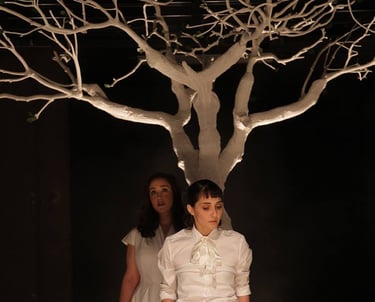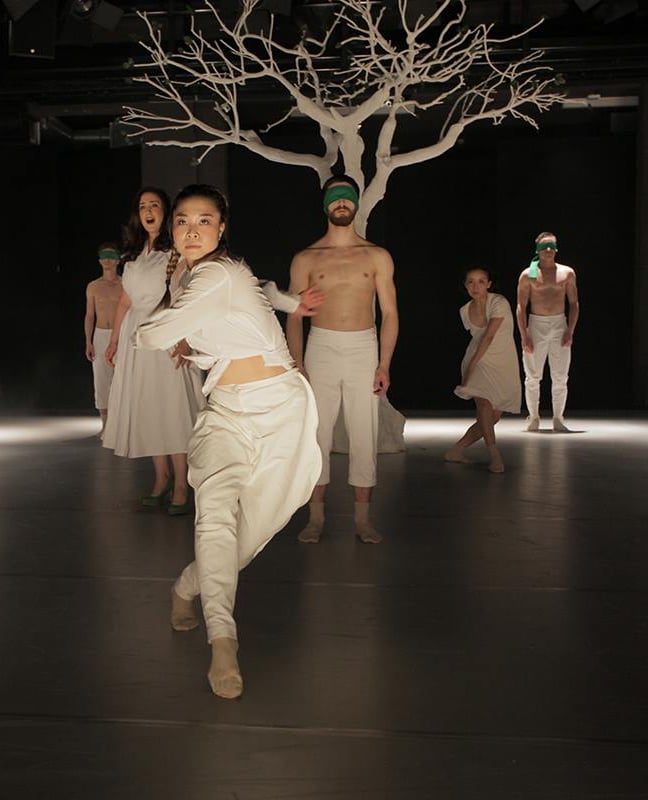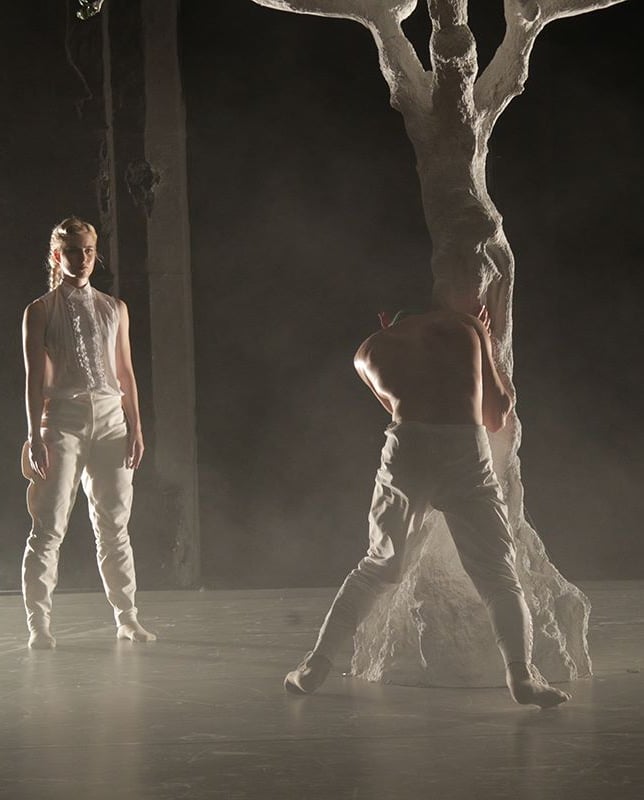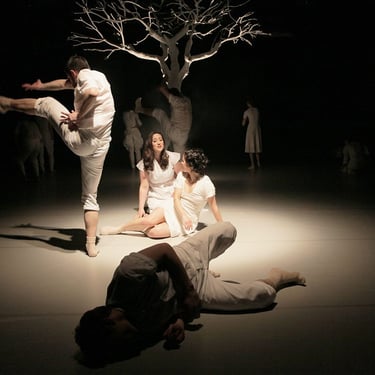DIE SCHÖNE MÜLLERIN
In Schubert's iconic cycle, the tragic seeps in slowly as we watch the unravel of innocence, and in its deceptive lightness it sinks deeper than in some of the composer's darkest compositions
Commission for Dance Company Theater Osnabrück
Première: 22nd April 2018 - Emma Theater - Osnabrück/ Germany
Music: Franz Schubert's 'Die Schöne Müllerin'
Soprano: Gabriella Guilfoil
Piano: Florian Appel
Dancers:
Ohad Fabrizio Caspi, Cristina Commisso, Neven Del Canto,
Marine Sanchez Egasse, Lennart Huysentruyt, Ayaka Kamei,
Oleksandr Khudimov, Vincenzo Rosario Minervini, Katherina Nakui,
Saskia de Vries, Rosa Wijsman,
Light, Costumes & Stage Design: Samir Calixto
Rehearsal Director/ Choreographer's Assistant: Leonardo Centi


© Jörg Landsberg/ Theater Osnabrück






© Jörg Landsberg/ Theater Osnabrück
DIE SCHÖNE MÜLLERIN
Choreographer Samir Calixto has developed through the last years a work that focuses on unveiling the timeless aspects of dance through the clash between iconic cultural references and the most primal features of our existence. Classical music, literature, spirituality and philosophy are elements which often have a strong presence in his choreographies.
After working previously on Schubert’s ‘Winterreise’, he will tackle this tme the composer’s equally iconic song cycle “Die Schöne Müllerin” in a special commission for the Dance Company Theater Osnabrück, furthering his investigations into a universe where dance reflects the state of impermanence intrinsic to our human condition.
By transcending the story of a young man’s tragic love illustrated by the poem of Wilhelm Müller, Calixto’s take on the famous cycle will dive into the core of the so-called ‘Schubertian’ spirit: its fragility, its emotional intensity and its melancholic nature. In this choreographic interpretation, the music will transport both spectators and performers to the elusive realm of memories. Memory thus becomes, through the musical spirit of Schubert, the closest touch with our idea of ‘home’. Instead of an actual space, here the concept of home alludes to a place which is ephemeral, untouchable, unreachable and thus only accessible through chimeras of times long foregone.
In this creation, the presence of the singer becomes the embodiment of deep reminiscences while dance manifests the emotional turbulence which runs underneath Schubert’s poetic musical lines. By being confronted to a strong musical and choreographic frame, the dancers will be led to engage their entire beings on stage by delving into a choreography which proposes an uncompromising crossing between musicality and intense physicality. In this process, humanity is revealed on stage exposing our own vulnerabilities, frailties and beauty.
ABOUT THE PERFORMANCE



